[Linda Hogle, Professor, Department of Medical History and Bioethics, University of Wisconsin-Madison]
It is my pleasure to introduce Judy Illes, who is the Canada Research Chair in Neuroethics at the University of British Columbia. To give you an idea of how broadly ranging her interests and research areas are, she also has affiliate appointments in Public Health and Population Heath Sciences and in Journalism, and she came to U.B.C. from Stanford University, where she had taken her PhD in Speech and Hearing Sciences.
As she was there, she began to really develop her abilities and skills in developing centers and interdisciplinary work, and became very interested in working with ethical issues, and came to the Stanford Center for Biomedical Ethics, where we worked together, all those – lo those many years ago.
She’s been absolutely instrumental since then in developing the area of neuroethics, and neuroscience and ethical policy issues. So, she co-founded the International Neuroethics Society, and currently serves as its president, and she’s the Director of Canadian National Corps for Neuroethics and was named both fellow of the Canadian Academy of Health Sciences, the Royal Society of Canada, and is a fellow of the American Academy of the Advancement of Science. She has long been interested and done a lot of work in imaging research, but she’s ranging much broadly – much more broadly now, and has also done work on, for example how neuroscience has been perceived in the media. And she’s just publishing a new book, which will appear this coming year from Oxford Press, Neuroethics: Anticipating the Future. With that, I give you Judy Illes.
[applause]
[Judy Illes, Professor, Department of Neurology, University of British Columbia]
Thank you, Linda, and Mike Koenig, it’s pleasure to be with old friends and new friends, and I’ve enjoyed my – my evening here yesterday and my day today just so very much. It’s a very short visit and I’m sorry to be leaving so quickly. But I’m delighted to be culminating my 30 hours with you with this lecture. And to give you a primer of neuroethics, but through some case examples of some of the work that we’ve been doing at U.B.C. and elsewhere and give you a sampler from some work around cells, systems, and communities.
[slide with Acknowledgements of all the research partners and their logos]
All of the work that I do really stands on the shoulders of my colleagues and my students and my funders, and to all of them, and to those who participate with our – with our studies –
[Judy Illes]
– and to all of them I’m immensely grateful. And I also am honored to be giving this lecture. My own training in the neurosciences –
[slide with a photo of Paul Bach-Y-Rita in whose memory this lecture is given]
– involved many studies that I learned from Paul, Dr. Paul Bach-Y-Rita, and I’m honored to be giving this lecture today –
[Judy Illes]
– in his memory.
So, let’s start with some first principles around neuroethics. And Linda was kind enough to tell me that you are very sophisticated audience, and I – to focus on data, and not just on theory, and I assure you that I will do that. But nevertheless, a little bit of theory, just to be sure that we’re all on the same page.
The first principle, I feel, is that for the sciences –
[slide with First Principles of the science of the central nervous system]
– of the central nervous system, to be applied for public health, social good, I think it’s really essential to identify and address ethics challenges at their earliest stages. Sometimes we can do them entirely proactively, sometimes we want to get in there a little bit early, sometimes we actually have to step in after the horse has left the barn, and I’ll come back to that metaphor in a moment. But the earlier we can get in and align ethics and law and social issues and policy considerations alongside the neuroscience, the better.
And the other first principle –
[Judy Illes]
– maybe it’s a second first principle, is that I really believe that the views and values of all stakeholders are a vital goal in achieving this goal, and in fact I’m going to focus a lot of the case examples that I’m going to share with you, although not entirely, on what voices and values have brought to us in the domain of neuroscience and neuroethics.
And this is a slide from Nicole, who I met with this morning. And I just want to say that neuroethics is very pragmatic and practical, and really has departed –
[slide of a cartoon where a horse named science is running away from a cowboy named ethics]
– from what I believe are the historical, perhaps adversarial relationships between bioethics and science. And I’ll just do that again because I paid a lot of money for this animation –
[laughter]
[cartoon animates and the cowboy of ethics catches up to and hops on the horse of science]
– which is that we really want to put ethics on the science horse. And it’s not riding the science, that’s not the metaphor, it’s really moving ahead quick- quickly and robustly together.
[slide with a timeline of historical milestones in the history of neuroscience]
And I think there’s good reason for that. So, if we think about the history of neuroscience going, even way back before the 1940s, but we think about some of the dark moments in the history of neuroscience, pre-frontal lobotomies, some of the atrocities perpetrated during the second World War by psychiatrists and neurologists, of all people. There really is a history of ethical missteps, if not ethical neglect, that we really responded to today.
And, you know, I think about the International Brain Research Organization here, the Society for Neuroscience formed in 1969, and many of the issues, the Social Issues Round Table that was initiated by the Society for Neuroscience, and on and on, including the formation of the International Neuroethics Society in 2006.
[Judy Illes]
And that’s a teeny piece of the logo here, I’ll show you a bigger logo of it later. We are really responding now and growing as field of people dedicated to thinking about these issues in public policy and neuroscience, really hand in hand. And I think it’s an extremely exciting time for us.
The Society itself, the Neuroethics Society itself just celebrated its 10th anniversary, and we’re actually looking at the 15th anniversary of the field itself, formalized in 2002, this coming November.
So, here’s today’s journey –
[slide of Todays Journey]
– and I hope that I can get through it in time that we have plenty of time for discussion.
[slide animates on Stem cell trial and spinal cord injury]
What I’d like to do is talk a little bit about my work with my colleagues on stem cells and spinal cord injury as an example of where neuroethics and cellular science actually intersects and has an impact on autonomy.
[slide animates on Neuroimaging and disorders of the consciousness]
I’d like to talk with you a little bit about neuroimaging and disorders of consciousness, and some of the work that I think has evolved towards understandings of the self, particularly under the case of brain trauma and neurologic conditions.
[slide animates on Neurogenetics and dementia]
And I’d like to talk with you a little bit about neuroethics and dementia.
[slide of Rationale with intersecting naratives]
And so, what’s the rationale for these three very different kinds of case examples? Well, I think they share narratives, and I will be bringing forward the voice of stakeholders in each of them, but they do represent values and a range of technologies, I feel that they are really timely and relevant. And for each of these, although they’re not the only ones, they’ve had some –
[Judy Illes]
– substantial impact on the policy and regulatory communities and have led to future directions that I’m very excited to share with you today, including some hot off the press results and publications that we have coming out.
So, in general, this is the framework that we’re working through, at least in my lab and with other – other groups in neuroethics –
[slide titled From is to ought showing the steps for neuroethics best practices]
– which is a very practical one, a very pragmatic one, and we really enter the field by identifying, prioritizing areas for discovery. My work, and again those of many of colleagues really is very empirically based. We collect data using both quantitative and – and qualitative methods and use a lot of social sciences methods that I bring together with hard sciences. We engage and embark usually on a large degree of deliberative consultation to experts to really take the data and interpret it and bring that forward and bring it in consultation with stakeholders, both lay and expert, and then to deliver guidance, whether it’s in the form of best practice or policy recommendations. And overall, our goal, as Ann Glover wrote, or was written about Ann Glover in 2013 is to inject science into policymaking.
[Judy Illes]
And really our philosophy, and it’s one that very much we spoke about when Linda and I were at Stanford, is that it’s much more meaningful to have guidance and regulations and public policy that are promulgated from inside the science rather than by the external community, where its relevance, its accuracy might not be as great as if put forward in an evidenced and expert way, and informed way.
So, our analytic approach, and this is just to show you, for those of you who are here from the hard neurosciences, that our analytic approach –
[slide showing the steps of Analytic Approach taken in her research]
– is every bit as rigorous as collecting f.M.R.I. data, it’s just a little bit kind of different kind of data. So, this would be our analytic approach, for example, to interview our focus group data, where we actually collect the data, so this would be narratives, for example, we manage the data through a very rigorous process of coding and iteration and checking and science field notes. We might engage in a phase of descriptive accounts where we start to pull themes out from what we’re hearing from interviews, focus groups, for example. We’ll start to compare the data, and then develop explanatory accounts. And all of this goes on in an iterative process throughout the analysis. And, in fact, unlike some of the quantitative methods for those – that are more familiar to you – to you in the neurosciences, we actually start analyzing narrative data like interviews from the moment we start collecting it, and it evolves through the analytic process; it’s very iterative. We don’t wait to collect a lot of data and then put it through an analytic statistical step or another approach.
[Judy Illes]
So, let’s talk about stem cells and spinal cord injury first.
This work actually stems back to when I was still at Stanford, and we’ll just start by giving you some – some data, some statistical data.
[slide with statistics of Stem cells and Spinal Cord Injury]
There’s 12,000 cases of para – new cases of paraplegia in the United States, and quadriplegia in the United States alone each year. 80 percent are spinal cord injury patients who are young males, and you can see the kinds of trauma through the images I put up on the slide.
[slide of the Science-Society Divide over the use of stem cells with and illustration of potential uses for stem cells on a human on the left and photos of two researchers – B.K. Kwon and M. Eijkholt on the right]
I think in the area of stem cells and regenerative medicine, there are very few examples, except maybe imaging, which we’ll talk about in a moment, where the science and society divide has either been so great or so hotly debated. And I just want to call out my collaborators Dr. Kwan and Marlene Eijkholt, who work with me at U.B.C. on – on some of these studies of stem cells, both at the bench, the ethics of stem cells at the bench, and for clinical trials.
[slide showing the Voices of Stakeholders with stakeholders listed underneath]
And so, this work, this case study that I’m going to share with you now, has had three phases involving the individuals you see up on the slide here. Experts in the laboratory and the medical community, affected individuals, as well as the people who care for them.
[Judy Illes]
And so, the very first phase of work was conducted when I was still at Stanford in 2007, and we reached out to stem cell scientists, and think about the era of stem cell science in 2006, 2007, we were just kind of rolling, and barely – people were barely thinking about the ethics of the – of the area except for embryos. And we reached out to scientists on the West Coast, and we said, Think about what might be the ethics priorities for this field as we go forward. Help us understand where we need to be taking the sort of, ethical, legal, and social issues.
[slide of the responses of scientists and clinicians on their ethical priorities for stem cells]
And this is what they shared with us, through again, interviews inter – analyzed in the rigorous way that I showed you before. And the importance of truly informed consent. And I have to tell you that this is taking me down the path now, after a number of years, to start thinking about models of informed uncertainty, rather than informed consent, and I’ll just leave that little seed with you.
Patient vulnerability, the importance of public trust, the importance of scientists having expertise not only in the science but also in the ethics, and vice versa. Again, anticipation of risk and consequences to prevent setbacks and backlash, as we’ve seen for example in other areas of science. And also, criteria –
[Judy Illes]
– for moving from pre-clinical to clinical studies.
So, those were the early days, in – in my world of ethics, and I moved to U.B.C. in Vancouver in 2007. I quickly embarked on some studies with my colleagues there. And one of the things we did is we went with our clipboards, I don’t think we had iPads at the time, to the large meeting of the Society of Neuroscience, where there’s sometimes 30,000 attendees, and we said, “Tell us what you think should be the optimal trial time window for clinical studies. Just what do you think?”
[slide with a bar graph of the results of the survey with length in months on the x axis and percentage of respondents on the y axis showing a large spike at 6 weeks to 3 months]
And so, you see the, Im – Im – I show you on the slide what most of the respondents said, that it should be, you know, most of them said between six weeks and three months post-injury.
Can any of you make a wager –
[Judy Illes]
– of actually where the majority of clinical trials are in terms of post-injury time-point now? Can anybody call out an answer? Where do you think it is, do you think it’s in this window? Do you think it’s earlier or later? I’m seeing heads shaking. Sorry? Say it, out loud.
[Audience member]
Later.
[Judy Illes]
Later, you think later? Okay, interesting, later. Anybody else want to make another guess? Okay, well you, like we in other studies that we’ve done, Ill show you, are dead wrong. This is when the clinical trials are going on. 150 of 161 registered trials –
[return to the graph of the respondents results with a yellow box around the 7 to 14 day time period]
– in clinical gloves – clinicaltrial.gov are taking place in the – in the immediate post-acute window, seven to 14 days post-injury. Very interesting, and so we’ll come back to this window in just a moment, because we have learned through our – our further studies that it is really –
[Judy Illes]
– sub-optimal from the patient and caregiver point of view. And the question will be, Can we do anything about that?
So, we embarked on some studies to find out the answer to that question. We worked with –
[slide with information on the clinical trials of people with spinal cord injuries with whom the center worked]
– 24 post-injury participants who were chronic, that is 18 months post-injury, and a smaller, necessarily smaller number of sub-acute post-injury, who were, you know, one to seven months post-injury, and there’s a big gap between the immediate post-injury, and let’s say longer-term post injury, sort of to try to mitigate any blurring effects there. And we ran both focus groups and one-on-one interviews, and many of these are actually in hospital or in rehabilitation units.
And now we embarked on interviews with them, developed from well – well-developed and piloted coding guides, to ask them about their views on stem cells and clinical trials.
[slide with a chart of the knowledge and tolerance of participants in the study]
I won’t show you all the data, just a little bit of a sampling, but here are two I think key points that we learned from these two groups. First, that the chronic post-injury group very much varied in their perception of risk. So, if I go back here –
[return to the slide of the spinal cord injury patients in the study]
– these are the thoracic-injured individuals, so these are the individuals who have lost the use of their lower limbs, but not necessarily their upper limbs, thoracic. And these are the far more severely injured individuals, those with cervical injuries, who likely lost also the use of their upper limbs, okay?
[return to the knowledge and tolerance of participants slide]
So, we’ve learned, in fact, that in the chronic post-injury group, those with thoracic injuries, who have more mobility, weighed benefits over risks in terms of their tolerance to stem cell interventions, and those are open to change, whereas the cervical patients, cervical individuals are quite change-averse.
[Judy Illes]
Also, in terms of knowledge, although we shouldn’t have been surprised by this, those who were immediately post-injury shared a lot about how – how little they know about stem cell interventions. Although we know anecdotally from the clinicians that people, if not the patients themselves, their caregivers are immediately on the phone or on the internet searching for information about stem cell interventions, because this is what’s been in their world, and sometimes are ill-equipped to answer the questions – to ask the questions, and our clinicians are ill-equipped to answer them.
But, you know, our hypothesis in going into this study is that it would be the individuals who were most severely affected would be the most prone to risky interventions, and those who were least-affected –
[slide On Decision-making with two bell graphs for the two classes of spinal cord injury patients as related to their relative tolerance to risk]
– would be the most risk-averse. And like the audience in-incorrectly predicting when the timing of clinical trials is going on, we were actually dead wrong. And it turns out that those individuals with the most severe injuries, shown here on the left of this cartoon, are most risk-averse, not most risk-prone. And we were very surprised by these data.
Our hypothesis was rooted in the fact that the more severely off you are, the most affected you are, we expected that they would be most receptive to any kind of intervention, and in fact what we learned is that the limited function that they retain is so precious that they are actually –
[Judy Illes]
– really afraid for any sort of experimental intervention that might mitigate any retained function that they have. A very big surprise to us, a very big surprise to our clinician colleagues as well, who – who always thought that this was really the group that we needed to be focusing on.
And then, of course, we always want to have a balanced approach, and we very much recognize and respect those people who fall in the middle of this cartoon –
[return to the On Decision-making slide]
– as represented by this quote, “Need scientific evidence that stem cell therapy is safe on humans.”
[slide on Health Care Providers and Carers on Decision Support]
Now, we also did some other studies with healthcare providers and carers. We really wanted to understand the support networks around the affected individuals. Again, we ran focus groups and interviews with them, and we found another fascinating result, which is that adequate decisions support is difficult to achieve, and there are really three obstacles. There’s the personal dimensions of risk. And that is respecting the self in this story, the self of each affected individual. Were not talking about statistics. Were talking about young people, mostly men, who have suffered a traumatic brain injury, who are living different contexts of their life. Very limited insights into pathophysiology and recovery, particularly in the early group. And this was just shocking to us, deferring attitudes of support networks.
And what we found is that the physicians were telling us that it’s actually –
[Judy Illes]
– the families and caregivers who should be supporting the affected individuals in their decision making around clinical trials. And it was the families who were telling us that it really should be the clinicians who should be supporting the affected individuals in their decisions about whether or not to enter a clinical trial. And they were each deferring to each other. And again, a sub-optimal situation for an affected individual whose life has truly changed in almost all – in almost all respects, especially in the early phases.
So, the deliverables from this case – case study were actually twofold.
[slide of the Deliverables of the spinal cord injury study showing results on the left and a diagram of the factors that affect the injured individual on the right]
One is that we recommend, and there’s some data in here that I didn’t show you, but we actually recommended that in the research setting, there starts to be a shift, and in the clinical set, in the experimental setting, there starts to be a shift of the time-points of intervention for stem cell therapeutics. Some of my colleagues, including Brian Kwan, and Wolf Teslak have started to – are starting to run studies with stem cell interventions, particularly oligodendrocytes in animal models six weeks out – six weeks out from injury, rather than in that very acute time-point, to see if, in fact, there is re-myelination or restoration of some sort of function that is as effective as it might be at earlier time-points. With the idea that if we could – if they could demonstrate –
[Judy Illes]
– the efficacy later out, that would give patients in – who are affected with the spinal cord injuries time to recover and to gain a little bit of the psycho-social footing, knowing what questions to ask, and to actually bridge that stability, that psychological sociological stability with a pathophysiological stability, and that the two combined might be more beneficial than just trying to intervene physiologically at those very early time-points.
The jury is still out, we’ll see if that works. But that, right now, is the theory.
And the other deliverable we have from this particular study is around new models of consent and resources. And this really bears on – on this sort of pointing fingers at each other for decision support. We are – have suggested both network supported, that is, people in the network around people affected with spinal cord injury, as well peer support consent, where affected individuals who are in the chronic phases are paired with people who are in the early sub-acute stages, to learn more about the potential for recovery, recovery of life and quality of life as well as experimental interventions. And we’re hoping to be able to enjoy some funding support to be able to test some of those models in real life with some of our – some of our participants as we go forward.
So, in our continuing neuroethics directions, this has – this led to some very exciting follow-on work, some work by Chris Scott –
[slide of Continued Neuroethics Directions on stem cell research with a bibliography of continuing studies]
– who was also with Linda and me at Stanford, and who is now at Baylor College, who has done some very nice studies on the ethics of starting and stopping clinical trials.
Some work by one of my students, Kim Sharpe, and others who looked at how people, parents with children with neurodevelopmental disorders, including autism and cerebral palsy, seek information about stem cell interventions. And we actually learned from them that many of them, and many of us, perhaps, race to the internet for information, but in fact we trust it very little. And so, we are actually allowing convenience to trump – trump our accessing more trustworthy sources, such as researchers and clinicians. And I think that is very important, particularly for –
[Judy Illes]
– affected children and the whole movement towards medical tourism of countries that are offered stem cell interventions or supposed stem cell interventions, where we really don’t know what is actually being offered abroad.
And now, Shelly Benjaminy and others and I are working on timeframes of whether patients actually understand, translational timeframes around stem cell therapeutics, in particular for neurodegenerative disorders like Parkinson’s and multiple sclerosis, and also accessing their understanding about accessing off-label – off-label interventions using regenerative medicine interventions.
So, that closes that case study, and we’re going to make big shift now from cells to systems. And again –
[return to the Todays Journey with Stem Cell trials greyed out and Neuroimaging and disorders of consciousness highlighted on the slide]
– we’ve sort of moved from autonomy to the self.
[slide of Disorders of Consciousness with statistics of traumatic brain injury]
And so, this is a story of disorders of consciousness. And again, to give you some background statistics, traumatic brain injuries, when they’re not causing spinal cord injuries, they are causing other sort of neurologic conditions like disorders of consciousness. There are almost two million of these kinds of new injuries each year in this country alone. Many people experience permanent disability. And today, largely, clinical diagnosis is based on behavioral assessment.
[Judy Illes]
And so, if we just kind of look at this umbrella of disorders of consciousness, there’s the minimally conscious state –
[slide of the umbrella of Disorders of Consciousness with the varying degrees of consciousness as determined by behavioral assessment]
– where individuals in this state can actually follow simple commands on and off. They might gesture, they might be able to have eye movements that are responsive to instructions. By contrast to a persistent vegetative state where there are some sleep wake cycles but really no purposeful – purposeful movements. And then, there’s of course coma, in which an individual is completely unresponsive. So M.C.S., P.V.S., and coma. So, we won’t speak at all about coma, but we will focus on these two states right here, because as many of you know, I’m sure –
[Judy Illes]
– we are able to obtain signals from the brain now around consciousness that really is unprecedented.
[slide with photos of the various methods that researchers can receive Signals from the Brain including structural (M.R.I.), Functional (M.R.I.) and Electrical (with electrodes on the skin)]
Whether it’s using magnetic resonance imaging in its functional form where we get levels, measures of blood oxygenation, or high-density E.E.G. And in fact, I’m trained as a neuroscientist, and all of these were my domain before I started doing ethics about 15 years ago.
[slide of Signals of Consciousness? showing photos of various brain scans using various methodologies]
And so, again, I’m sure many of you are familiar with these classic studies by Miko, Schiff in New York or Adrian Owen who is now in Canada, where participants with disorders of consciousness measured against controls provide, in response to certain stimuli, some levels of activation, regional activation in the brain, that look similar. So, for example, a patient, two patients here –
[indicates with the mouse pointer the left-hand side images where brain images of a patient are compared to a control patient]
– in – in a disordered state of consciousness compared to listening to stimuli of loved ones versus noise, and all of you know these are subtraction experiments. And they do sort of look alike. Similarly, here –
[indicates the right-hand brain images from patients and control subjects related to tennis and special navigation experiments]
– in this classic experiment, of patients who are asked to imagine that either playing tennis, or navigating through their homes, compared to controls. And you can see these activations in supplementary motor cortex, pre-motor cortex, and so forth, look similar to these group of controls, suggesting that there is –
[Judy Illes]
– some form of at least information processing, if not consciousness, going on in the brains of these individuals.
These kinds of signals are measured in about one out of every 17 to 20 individuals who are diagnosed as persistent vegetative state.
[slide with the Fundamental Ethical Challenge of dealing with patients with varying states of consciousness]
So, some of you might say, well that’s a really small number, what are we doing? And some of you might say, that’s a really big number, what are we doing? With a 40 percent misdiagnosis rate from clinical exam.
And so, these patients who, from whom we’re able to obtain these activation signals, are really in some state of consciousness. That is, may or may not be, absent of cortical activity, and we really don’t understand how to deal with them in our society either ethically or legally or medically. So, we embarked on the latter question, how do we deal with them, in our Canadian healthcare system in particular.
[slide with the three phases of work on the Clinical Actionability of the study with two smaller photos of the primary researchers, Adrian Byram and Grace Lee]
And we asked the question about clinical actionability, again though three phases of work, a bit mapping onto the work I showed you earlier, and I’d like to call out here my colleagues Adrian Byram, he’s my graduate student, and Grace Lee, who worked hard on these projects. And so, we embarked on three steps.
[Judy Illes]
We went to map the landscape in the literature, develop a conceptual framework in which we would actually test the question of clinical actionability, and then establish evidence for translation priorities.
So, step number one was to map the landscape, and with Alex Bennett, who is also my graduate student –
[slide of the Neuroimaging and M.C.S. Citation Map which shows prior research as a map of larger and smaller multicolored dots winding in an S shape]
– we did this giant bibliometric study of who’s talking to whom in the public literature. And so, you see here, here are the big guns in the neuroscience community –
[uses mouse pointer to indicate the center of the S]
– Mike probably knows all of them, talking to each other, citing each other. And what we found is that there are actually very few networks of people talking about very few networks of works. So, there are isolated pockets of this kind of work going around the world. But I’m just going to point you up to here –
[uses mouse pointer to indicate a small green dot at the top right-hand side of the S labelled Bioethics and Brain Injury]
– which is the little bit of the literature at the time we did this study, in the area of bioethics and the brain. So, these are the ethicists talking about the big f.M.R.I. studies. So, a lot of opportunity here for more work to be done.
But aside from that little commercial about opportunity, we took all this literature, and we put it into a conceptual framework –
[slide showing the Conceptual Framework of the study as a decision tree]
– which will be very difficult for you to see, I apologize for that, but there’s no way to reduce it down. But the bottom line is we asked, given the literature, is this research clinically actionable, and if the answer is yes, what kind of impact would it have. And I’m just not going to talk all the way through the slides, but basically, we ask questions about people, and institutions where people are the patients and the families as well as the medical care team, and the institutions or the healthcare systems, health research, policy law, scientific knowledge. And we have three criteria about technical feasibility, significance and change in outcome and economic justification. And if the answer were to be no, we wanted to know why not, and if why not, what could we – might we still do with the information. Again, always having a very positive –
[Judy Illes]
– solution-oriented bend on our work.
And we conducted a study with, two phases of studies, with experts across a wide range of expertise, and there were 63 of them.
[slide of the Prioritization of the study indicating with an arrow pointing down the priorities of Qualitative Data Analysis then Emerging Themes and finally New Knowledge and Deliverables leading to Consensus Deliberations at the bottom of the arrow]
For those of you who do qualitative work, like interviews and focus groups with experts, you know how hard it is to get people to respond and participate, but we were very successful.
[return to the slide of the Conceptual Framework]
And we come back to conceptual framework, and would anybody like to wager whether our 63 experts landed on the side of yes –
[Judy Illes]
– clinically actionable, or no, not clinically actionable? Can I have a show of hands for yes, clinically actionable?
[one audience member raises hand]
Only one, really? And the rest of you, raise your hand if you think not clinically actionable.
[smattering of audience members raise their hands]
So more of you, although some of you are clearly abstaining from my little survey here, you are not going to be participants in my studies.
So, actually, an overwhelming, overwhelming response to the yes side. Our experts suggestion was clinically actionable, but with certain caveats, so let’s talk about what those caveats are.
The first one, whether the caveats or priorities, is that we have to know more about really –
[slide of the caveats of the Experts on the research priorities]
– the correlations of neuroimaging with behavior. We have to have as a priority in going forward and really moving towards clinical actionability the incidence and prevalence of these disorders of consciousness. What are the probabilities of covert consciousness? Clearly harmonize methods and paradigms and stimuli for running these experiments. Because if everyone, even if there’s six or eight or a dozen sites around the world doing these kinds of experiments, everybody’s doing – using different paradigms and using different languages, we’re just not going to learn enough about these disorders of consciousness, which inherently –
[Judy Illes]
– by their nature, given the nature of injury, the nature of individuals are messy enough. And about quality of life.
They also told us about translational priorities or caveats before moving forward, and here they gave us some examples.
[slide of the Translational Priorities of the experts]
For example, major themes about guidelines from the timing of neuroimaging tests. When do we do it post-injury? How often do we do it? What’s the cost? What are the best practices? What protocols do we have for communicating risks and benefits to caregivers who have to decide whether to involve their loved person in an experiment like this? And again, harmonized terminology.
[Judy Illes]
So, harnessing the power of multiple groups who are working in silos. And on priorities for self, which is actually, and for those of you in the area of public policy in particular, understanding how this new kind of work tells us about personhood and will and preferences. Imagine, especially, if these kinds of patients –
[slide of the Priorities for Self that the experts would like to see]
– would be able to use such a tool, certainly not f.M.R.I. in our hospital settings, but maybe portable E.E.G. systems down the road, could actually express their wills and preferences. And also, therefore, if we can imagine rolling this – this tool out more in the public domain, we need laws for defining capacity and competence.
[Judy Illes]
I’ll come back to that in just a moment. And so, this work has led to two directions, two very important directions that I think are very exciting. And one is –
[return to the slide of On Priorities for Self]
– we ask the question, and it really goes back to selfhood and wills and preferences, and laws about capacity and competence. So, all of you, I’m sure, are aware of the new laws that are being passed around physician-assisted suicide.
So, imagine if we coupled this kind of technology, and somehow enabled –
[Judy Illes]
– or empowered these patients to make decisions by producing brain signals in these proxy paradigms with a large amount of statistical processing, and we said, “Do you want to live, do you want to die? Do you want to listen to Mozart, do you want to listen Michael Jackson?” Right, very different kinds of questions, but very important, particularly the first one. And no one has really thought about end-of-life decision making in the context of neuroimaging and disorders of consciousness. And so, with Manny Cabral, we embarked on analysis –
[slide of Continued Neuroethics Directions with citations of current works of Neuroethics]
– and this is really a totally theoretical analysis, that was a little dicey as a – as a topic. And we are now very excited to have paper at press in J.A.M.A. Neurology, where –
[slide with a table of Neuroimaging and End-Of-Life with varying types of ethics at the top and various types of end-of-life decisions on the left]
– we looked at this question, the question being, Can we use functional M.R.I., that is the functional signals from brain activations in the context of end-of-life decision making? Ought we use it? And how do we ask that question and analyze it? And we chose three frameworks from the ethics world, although it’s just three of the many, many we could have chosen: clinical ethics, feminist ethics, which for those of you who don’t know, really relies on relationships, it’s really an ethics of relations, and disability ethics.
And we took the four variables on the y-axis of this table, it’s not really a figure – communication, health decision making, end of life decision making, and relief from pain and suffering, and sort of plugged those together. And so, what might these ethics frameworks tell us about these four variables? And I think for each of them that we come down –
[Judy Illes]
– largely on the side of autonomy, empowerment potentially, informed consent, if in fact we could trust these signals to tell us that somebody’s able and has the capacity to provide consent.
And so, were – this – were pretty optimistic about this until we started looking at things like the signal clarity –
[new slide of Neuroimaging and End-Of-Life table with the varying types of ethics at the top and the various now objections on the left]
– in terms of reliability and reproducibility, and this is with no disrespect to the functional M.R.I. community, I was part of it. But we are still working out the kinks in the meaningfulness of this signals, unequivocally. There’s a sliding scale of competence, and there’s an allocation of limited resources. And from each of the points of view of ethics, clinical ethics, feminist ethics, and disability ethics, we come down on the side of not ready yet. Not never ready –
[Judy Illes]
– but just not ready yet.
And in fact, the Catch 22 that we’ve fallen on, at least in the Canadian healthcare system, we don’t know what your healthcare system is going to look like in the – in the coming time, but the bottom line is that we – we might have a tool that, with – with its limitations and its power, might be useful for empowering patients within a disordered state of consciousness, to make some decisions about the quality of life. Maybe about music, certainly about pain, but not reliable enough about end-of-life decision making. So, we have an expensive tool that we might use for quality-of-life issues, but not yet good enough for real questions of justice and end-of-life. And so that’s our Catch 22 right now that we’re trying to, now, in the next phase of this work try to sort out with our colleagues both in the legal and health sciences community, medical community, and our neuroscience colleagues of course.
And finally, and this is, I alluded to this study, that is – it’s just coming out now in Nature Biotechnology –
[return to the slide of Continued Neuroethics Directions with a new citation of a new study on Brain Patients]
– and I was tempting Mike and Linda last night over dinner. We asked the question, What is – well, we’re starting to see, especially those of us who review papers and grants, a lot of patents around brain devices and brain methods, and we started to see things like brain regions –
[Judy Illes]
– being invoked in these patents, and this was making us very nervous. And so, we embarked, with Dillon Edris-Roskams, who is a law student in Canada, on a patent analysis –
[return to the slide of Continued Neuroethics Directions with the citation for the Brain Patient study to which she is referring]
– we did a patent landscape analysis of patents –
[slide of a graph of Protecting Brain Regions with the year on the x axis and patents invoking the brain on the y axis showing and increase since the year 2000 with them seen through practical, principled and ideological ethical lenses]
– from 1976 to actually 2005, it’s cut off on this graph. And you can see there’s an increasing number of patents that invoke brain writ large.
And so, imagine a patent that somehow invoked the claustrum, which from the work of Chris Koch, might actually underlie consciousness. So, we looked at these patents through three ethics lenses: practical, principle, and ideological, and we learned the following things. One is that we did not find any patent, per se, that has yet attempted to patent a brain region, not the anterior cingulate, not the subthalamic nucleus for – for D.B.S., not the claustrum.
However, the language of some of these patents, particularly those in the more recent years, is so broad and so vague, that it does actually protect brain regions.
[Judy Illes]
And from a neurosurgical point of view or a research point of view, those of us who are doing interventions on certain brain regions could be challenged in a patent case, given how vague and broad some of the language is. And sometimes, how the – the intervention is described in the patents actually go beyond just the target disease condition. So, we – we found patents that, in effect, talk about Parkinson’s disease, a target for Parkinson’s disease, for which that target has never been associated with Parkinson’s disease before. So, there’s a lot of work to be done in patent arena, both for disorders of consciousness, and more broadly, and for people in the area of neuroscience and public policy, this is a rich space that is going to require a lot more work. Because I would submit to you, that like genes, and for those of you who are familiar with the Myriac case, where there was a patent around the – the B.R.C.A. gene, sorry, brain regions ought not be patented or protected. You just can’t own biomaterial, not a gene, and not a brain region.
Alright. Well, if I haven’t exhausted you yet, I want to show you a third case in my neuroethics space –
[return to the slide of Todays Journey with Stem Cell trials and Neuroimaging greyed out and Neurogenetics and dementia highlighted]
– which is departure from the other two, and deliberately so.
[slide of a photo of a drop of water suspended with the title Neuroethics in the Wild]
I’d like to talk a little bit about Alzheimer’s disease, and about neuroethics in the wild.
[slide on Neurogenetics and Dementia with pertinent statistics below]
All of you know that the population is aging. Alzheimer’s disease and vascular dementias are probably carrying a huge burden of neurologic disease in our society. And we – we might be able to predict many of these diseases at this time, but we cannot cure them.
[slide with the Challenges of Prediction for Alzheimers disease with the varying factors pertinent to the disease listed]
There are lots of challenges around prediction. Besides not being able to cure them, there’s a lot of uncertainty about sensitivity and specificity. As we learn more about genes, we learn more about diseases and clinical sub-types. There are issues around distributive justice of healthcare access, pleiotropies and the effects on third parties, and whom to test and when.
[slide of the problem of Cross-cultural Neuroethics as the worldview of the researchers differs from the worldview of the researched with a small photo of the researcher Dr. B. Lynn Beattie]
[Judy Illes]
And the challenges of prediction are no more great than when you go out of our comfortable urban settings, where there are plenty of challenges, and you go out into the rural areas, maybe of Wisconsin, or in my case in the rural areas, real remote areas of British Columbia.
[return to the Cross-cultural Neuroethics slide]
And we started a line of work that we called cross-cultural neuroethics, specifically seeking different world views about advances in brain sciences, and some of the ethical and social issues and policy issues, that are important to people who don’t live in the world that we live in, particularly those of us in neuroethics who have largely been of European background.
And this is Dr. Lynn Beattie and myself, up about 2,000 kilometers, so 1,500 miles north of British Columbia, so above the Alaska border, really, really, far in the north. A place to which we had to frequently charter airplanes to do our work with the Tauhtan family to whom we are incredibly grateful for their generosity.
[slide posing the question of Opportunity or Intrusion? with a bubble with the words Late onset, sporadic Alzheimers disease at the bottom]
And the question is –
[slide animates on the top a new bubble with the words Early onset, familial Alzheimers disease]
– this family –
[slide animates on the PS1 gene in box to the right of the top bubble as s novel autosomal dominant gene mutation in a large Aboriginal kindred]
– has – has been identified to have the PS1 gene. They are at high risk for early-onset familial Alzheimer’s disease, which affects anyone in whom the disease – in whom the gene exists. It’s a novel autosomal dominant gene and is very different from late onset sporadic Alzheimer’s disease. It affects people around the age of 50, and there are many, many, socio-cultural issues around caring for them, including where they live, which is so far and remote, and issues around understanding genes, understanding genetic testing, understanding prediction.
And you can imagine that the closest university facility for testing is the University of British Columbia –
[Judy Illes]
– 2,000 miles away, and the closest care facility for those with the advanced phases of the disease from the reserve where this family is primarily located, is about 1,000 miles away in traditionally warring territory.
So, you ask the question, Why aren’t they flocking to the university setting for predictive testing? Right, we’re all waiting for them to show up, and they’re just not coming. And our clinicians said, “Why aren’t they coming?” And I said, “Well, did you, like, ask them? Did you ask them whether they understand what a genetic test is, or a gene, or why or what we can do in the university setting to make this valuable to them?” And so, this is kind of, this is what keeps us in business, right? All of us in this room, this is what keeps us in business.
And so, we embarked on a very long community based –
[slide of the Community-based Research that the study did and the processes of that research]
– participatory research project. It took us about six or seven years to do this work. We would go up to the north, as well as some of our local communities, but most of our families were up north, and we used both our western as well as our indigenous methods, including sharing circles, to engage in focus groups with these individuals, both the elders, the adults, and the younger members of the community, and we conducted not a few individual interviews with them –
[Judy Illes]
– to understand, to develop the research questions together, and understand with them what it means to have Alzheimer’s disease. What it means to have a genetic test. And how – whether we are intervening positively or, in fact, intruding, like my former slide suggested, into their lives.
And in fact, we learned from them, and I think it was through the good work that we did together, that –
[slide of the impacts On Individuals and Community of the research that was done]
– medicalization with good education really can go hand in hand with traditional views. And this led us really to understand with them that medical diseases, that we consider medical diseases, can be viewed through what’s called a two-eyed seeing, the – the alignment of traditional views of a disease and understandings of causes of a disease, and the biomedical ones.
We learned that knowledge sharing is vital, particularly when the knowledge is good knowledge. Testing looks like will remain irrelevant, we just haven’t demonstrated meaningfulness, and it seems to remain irrelevant.
But – and there are really complexities when we talk about cross-cultural work, particularly –
[Judy Illes]
– in these highly sensitive areas.
But I want to share with you, well, I’ll share with you a deliverable. So, this was very interesting, again, for those of you in public policy, and particularly with the students, we were talking earlier about what kind of deliverables can you have. And so, we’ve published a dozen –
[slide of two photos of two books covers of books dealing with Alzheimers based on the research]
– or so book chapters and academic papers and all the usual stuff, I’ll call it.
But with this community we also published a book for the adults, called Wellness in Early Onset Alzheimer’s Disease, which uses the narratives and the photographs of people in the nation themselves to describe, with them and for them, what this early onset form of Alzheimer’s disease was. And through our work with them, we also learned that their youth really didn’t have an understanding of this disease. And with them, through an indigenous illustrator and an elder from the community, we produced a comic book, of sorts, called The Mind Thief, so it’s not very comical. But, I have to say – but it is one that we’ve not distributed hundreds of copies to members of the nation, and we’ve also produced a YouTube video explaining the disease, and a Facebook page for support for this – for this community, in particular –
[Judy Illes]
– and also, for other aboriginal communities and indigenous people affected by these kinds of disorders. So, a very different range of – of products than you would expect from an academic setting, and I really encourage all of you to think out of the box when you’re thinking about public policy and reaching your legislators, your citizens, your community out there. There are all kinds of different ways to communicate that they feel sometimes odd for us in the academic community, and sometimes they’re not really valued by our colleagues or by administrators, but they do need to be, and we need to work hard to have them recognized.
And so, going back to continued neuroethics directions, so where did this see two-eyed seeing lead us to? Well, one of the things we learned from our family up north –
[slide of Continued Neuroethics Directions with a photo of a grizzly bear in a river with the quote I am part of any environment and if my environment suffers I suffer as well.]
– is that with our collaborative work they started to understand the medical underpinnings of this early onset Alzheimer’s disease. They still retained some belief about the causation that was grounded to the environment and the land and the water. And as this beautiful quote says by one of the Tauhtan elders, “I am part of any environment and if my environment suffers, I suffer as well. And this is a community –
[Judy Illes]
– around which many mining operations have opened over time, and for which they’ve struggled, for economic advantage on the one hand and threats to the environment on the other. And so, we started to take this as an untapped source of inquiry and have gone down this path to something we’re calling environmental neuroethics. And sort of in using their understandings and their beliefs about the environment, we started to look into the literature around the mining, and fracking in particular, and asked the question, How much has brain and mental health, how much was brain and mental health actually referenced in the mining and fracking literature? And sure enough –
[slide of a set of bar graphs comparing the number of papers where brain and mental health was referred to by the criteria of Mentioned but not discussed, Brief mention and Substantial discussion showing the prevalence of the Mentioned but not discussed option]
– we found very little of it. We found a lot about respiratory disease, asthma, we found a lot about cancer, we found a lot about skin cancer, but we found virtually nothing about brain and mental health in the mining literature, either in environmental ethics, environmental health. Really, really, we combed the literature, and you see we see a lot of, like, maybe brain and mental health is discussed, but maybe it’s discussed briefly, and I think we found one paper, two papers, and one of them was ours, in which brain and mental health was invoked as an important issue for us to be thinking about as we go forward in contaminating our lands.
In the ethics discussion, I’ll just show you, there was mention of safety and no harm –
[slide of a pie chart of Environmental Neuroethics related to fracking with the majority of papers researched talking of Safety and no harm]
– but otherwise very little about other ethics concerns, such as trust, vulnerability, justice, empowerment, and something – a little bit about the precautionary principle.
Right now, I’m waiting to hear on a –
[Judy Illes]
– large grant that I’ve submitted to a Canadian foundation to see if we can actually put brain and mental health on the national policy agenda for the environment. And these competitions are – are tough, but I’m really hopeful that I’ll be successful, because I think this is a huge area of inquiry that we need to embark on now, not later.
So, this is the framework we’re working on for environmental neuroethics.
[slide of the Framework for Environmental Ethics with the key points of the framework listed]
It draws very much on the framework from neuroethics, per se, where we think about the brain sciences, relation-relationships, cross-cultural factors, social policy, and the ever importance of public discourse, all associated with the environment, and the brain of course.
[slide of a Summary of Todays Journey dealing with neuroethics and neurotechnology in the context of autonomy, self and community]
And so, let me just summarize. I’ve given you three case studies. I’ve given you a primer, sort of a framing for neuroethics. I tried to give you three examples, I hope I was successful in grounding your ethics inquiry in selves, in systems, in communities as it relates to autonomy and self and communities.
[Judy Illes]
And I – I hope that through the narratives of these case studies, I showed you a little bit about how we’re able to prioritize and discover important issues in neuroethics, and ethics and the brain, address them empirically, embark on open and transparent discussions to bring us to good guidance and good policies –
[slide of From Is to Ought and What Lies Ahead with the various factors grouped in boxes]
– where policy is appropriate.
[slide of Looking to the Future with goals of neuroethic research listed]
And I just conclude, then, that I think it’s essential to integrate human values into all aspects of the neurotechnology development that we do, and our neuroscience discovery –
[Judy Illes]
– and I urge you to leave no stone unturned as new opportunities for neuroethics arise.
And I invite you to engage with me today, and as we go on either through my website, through my email. And we’ve been talking a little bit about the International Neuroethics Society –
[slide with More Information sharing the lecturers website, email, Facebook and twitter accounts]
– for the past day and a half. Please, get involved and join us, we are really endeavoring to be the authoritative body for all things neuroethics, neuroscience, and public policy. We’re a group of about 400 individuals now, and growing in a very robust way, and we would welcome you warmly. So, thank you very much for your attention, and I’m happy to answer your questions.
[applause]
Search University Place Episodes
Related Stories from PBS Wisconsin's Blog

Donate to sign up. Activate and sign in to Passport. It's that easy to help PBS Wisconsin serve your community through media that educates, inspires, and entertains.
Make your membership gift today
Only for new users: Activate Passport using your code or email address
Already a member?
Look up my account
Need some help? Go to FAQ or visit PBS Passport Help
Need help accessing PBS Wisconsin anywhere?

Online Access | Platform & Device Access | Cable or Satellite Access | Over-The-Air Access
Visit Access Guide
Need help accessing PBS Wisconsin anywhere?

Visit Our
Live TV Access Guide
Online AccessPlatform & Device Access
Cable or Satellite Access
Over-The-Air Access
Visit Access Guide
 Passport
Passport


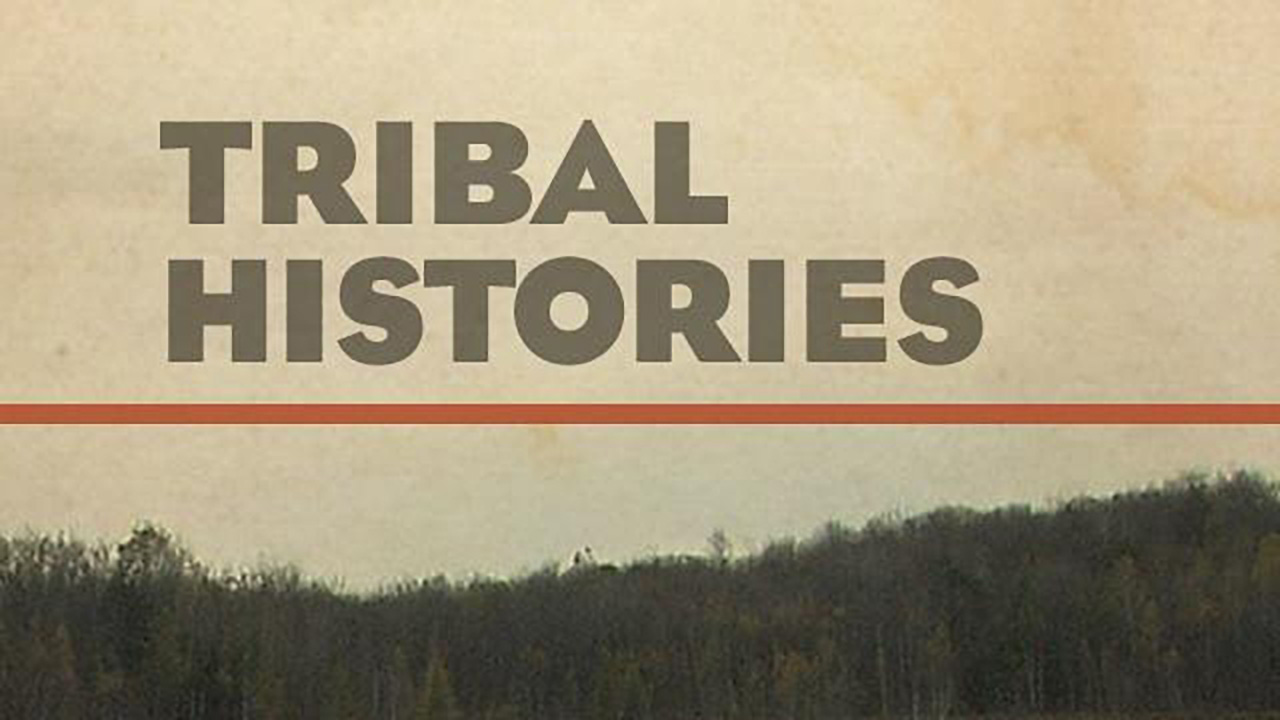
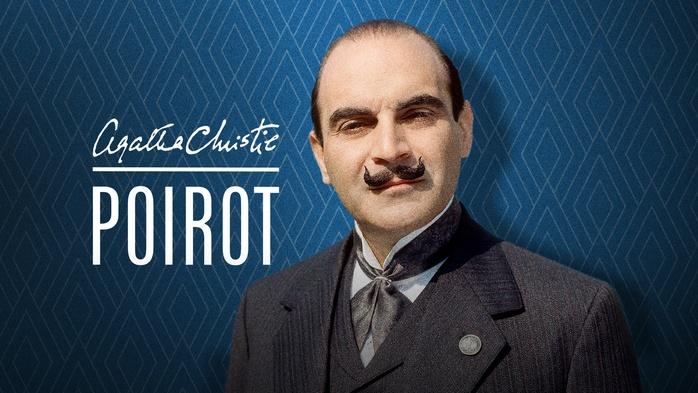




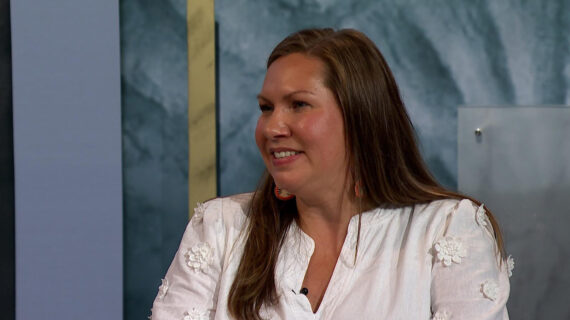
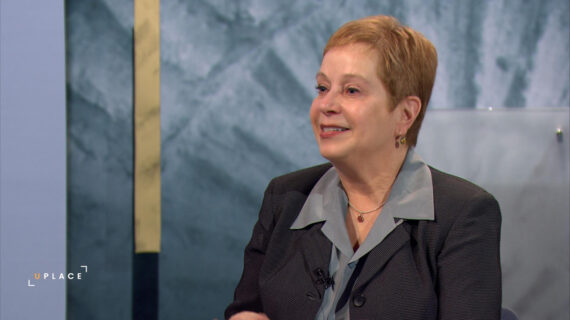
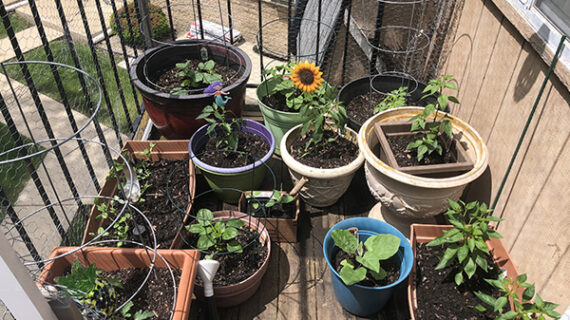
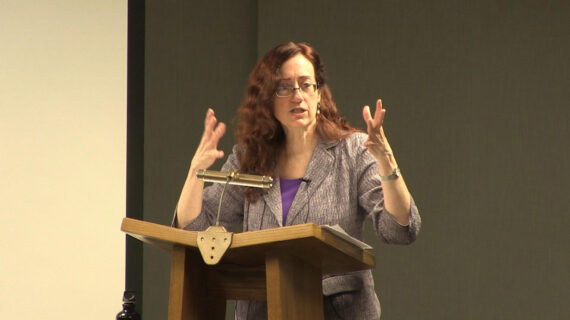
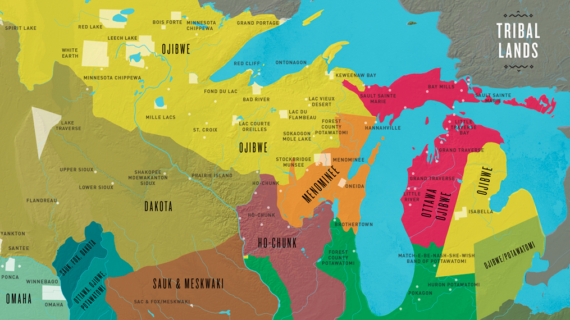


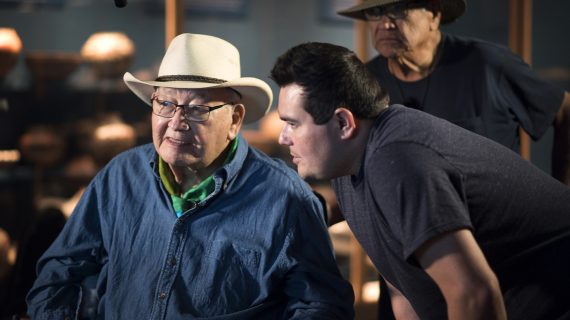


Follow Us